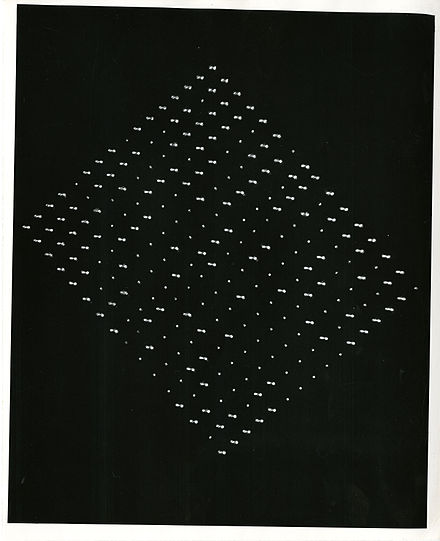Willams Kilburn tube

For use in a binary digital computer, the tube had to be capable of storing either one of two states at each of its memory locations, corresponding to the binary digits (bits) 0 and 1. It exploited the positive or negative electric charge generated by displaying either a dash or a dot at any position on the CRT screen, a phenomenon known as secondary emission. A dash generated a positive charge, and a dot a negative charge, either of which could be picked up by a detector plate in front of the screen; a negative charge represented 0, and a positive charge 1. The charge dissipated in about 0.2 seconds, but it could be automatically refreshed from the data picked up by the detector.[21]
Although some early computers such as EDSAC, inspired by the design of EDVAC, later made successful use of mercury delay-line memory,[18] the technology had several drawbacks: it was heavy, it was expensive, and it did not allow data to be accessed randomly. In addition, because data was stored as a sequence of acoustic waves propagated through a mercury column, the device's temperature had to be very carefully controlled, as the velocity of sound through a medium varies with its temperature.
Williams had seen an experiment at Bell Labs demonstrating the effectiveness of cathode-ray tubes (CRT) as an alternative to the delay line for removing ground echoes from radar signals. While working at the TRE, shortly before he joined the University of Manchester in December 1946, he and Tom Kilburn had developed a form of electronic memory known as the Williams tube or Williams–Kilburn tube, based on a standard CRT: the first electronic random-access digital storage device.[19] The Baby was designed to show that it was a practical storage device by demonstrating that data held within it could be read and written reliably at a speed suitable for use in a computer.[20]
The Williams tube used in Baby was based on the CV1131, a commercially available 12-inch (300 mm) diameter CRT, but a smaller 6-inch (150 mm) tube, the CV1097, was used in the Mark I.[22]